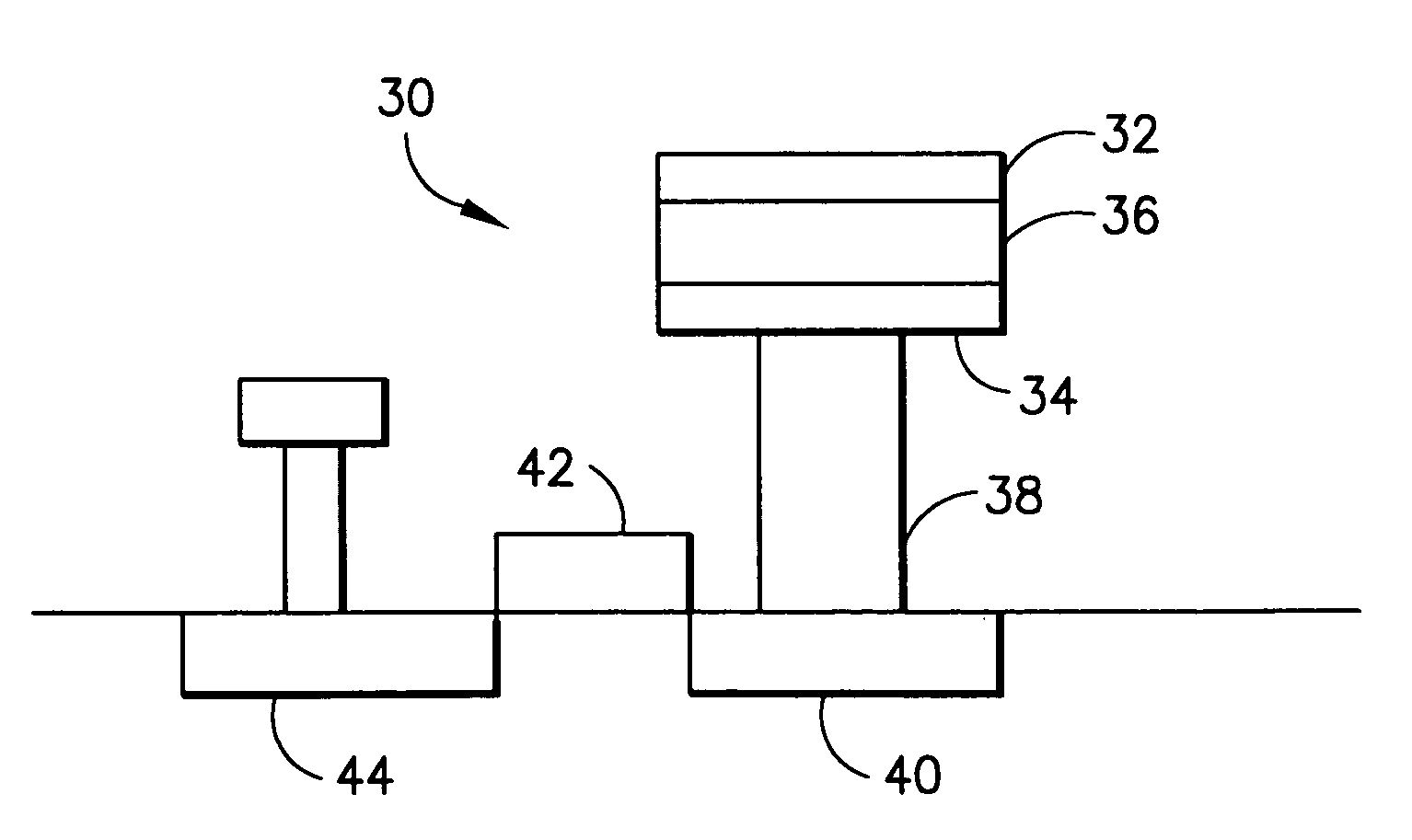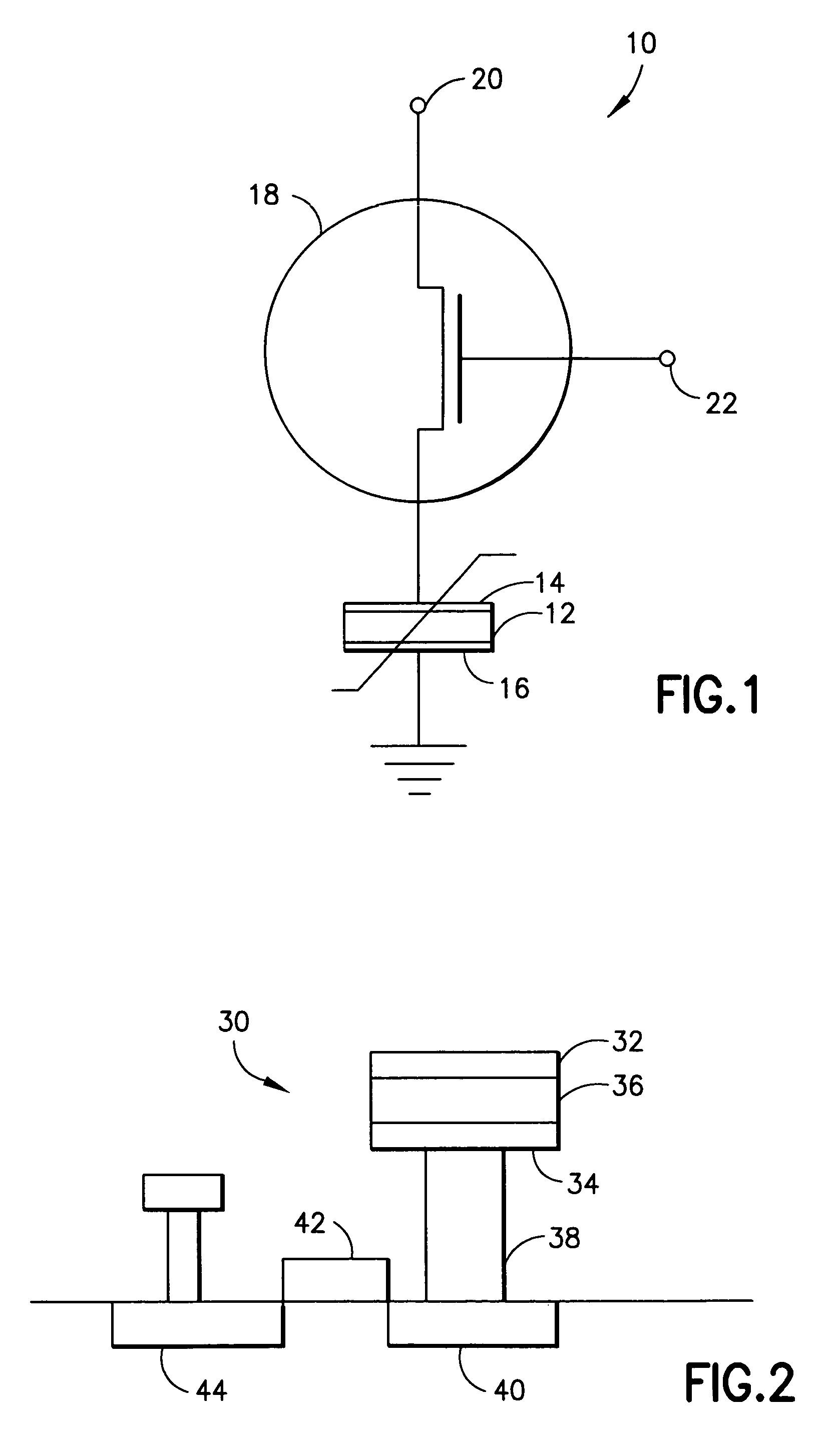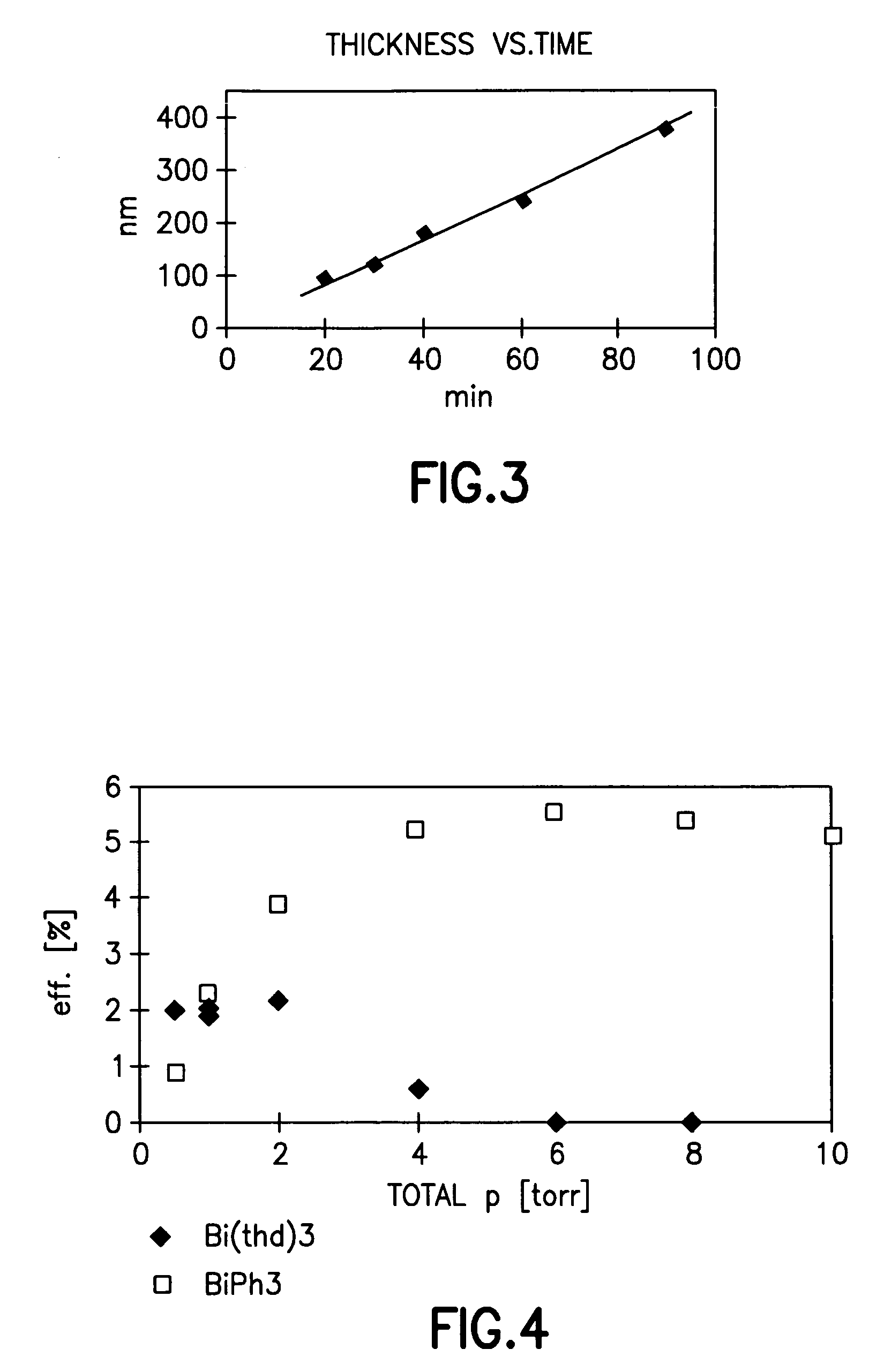Low temperature chemical vapor deposition process for forming bismuth-containing ceramic thin films useful in ferroelectric memory devices
a technology of chemical vapor deposition and ceramic thin films, which is applied in chemical vapor deposition coatings, metallic material coating processes, coatings, etc., can solve the problem of only achieving low integration density, and achieve improved morphology, ferroelectric character, thermal transport and flash vaporization.
- Summary
- Abstract
- Description
- Claims
- Application Information
AI Technical Summary
Benefits of technology
Problems solved by technology
Method used
Image
Examples
example i
[0145]SBT is deposited on a substrate utilizing Sr(thd)2(tetraglyme) as the Sr precursor, mononuclear Bi(thd)3 as the bismuth precursor and Ta(OiPr)4(thd) as the tantalum precursor. The precursors are each dissolved in a solvent mixture and stored separately in three respective reservoirs. The solvent for each precursor is a 8:2:1 by volume mixture of tetrahydrofuran:isopropanol:tetraglyme. Molar concentrations of the precursors are 0.4 molar for the tantalum precursor, 0.25 molar for the bismuth precursor, and 0.15 molar for the strontium precursor.
[0146]Prior to delivery, the three precursor solutions are mixed in a liquid delivery system to provide the desired precursor composition. The precursor mix is delivered by a pump, preferably at a volume entry flow rate in the range of from about 0.05 to about 0.25 milliliters per minute, to a vaporizer comprising two chambers separated by a frit. The vaporizer is maintained at a temperature in the range from about 170 to about 200° C.
[0...
example ii
[0153]An SBT film was deposited by CVD using a process similar to that described in Example I, but at a deposition temperature of 385° C. FIG. 5 shows an atomic force microscope (AFM) map of a sample produced by a process similar to that described above, wherein the SBT film is deposited at 385° C. and has a composition of 18.6 atomic % Sr, 43.4 atomic % Bi and 38.0 atomic % Ta, with a film thickness of 216 nanometers. The mean roughness of such surface is 6.8 nanometers. The Cu K-alpha x-ray diffraction spectrum of the resulting film is shown in FIG. 6, with fluorite (111), (220), (220), and (311), reflections at 28.3°, 32.9°, 47.1° and 56.0°, respectively.
example iii
[0154]An SBT film was deposited on a platinum substrate by a process of the general type described in Example II. The Pt layer was approximately the same thickness as the SBT layer, as is shown in the TEM bright field image of the as-deposited film in FIG. 7, the inset portion of which is an electron diffraction pattern evidencing the amorphous character of most of the SBT film. Upon annealing in oxygen, such amorphous layer is converted to the Aurivillius SBT phase as shown in FIG. 8, which is a Cu K-alpha x-ray diffraction spectrum of a sample deposited at 385° C. and annealed at 800° C.
PUM
| Property | Measurement | Unit |
|---|---|---|
| Temperature | aaaaa | aaaaa |
| Temperature | aaaaa | aaaaa |
| Temperature | aaaaa | aaaaa |
Abstract
Description
Claims
Application Information
 Login to View More
Login to View More - R&D
- Intellectual Property
- Life Sciences
- Materials
- Tech Scout
- Unparalleled Data Quality
- Higher Quality Content
- 60% Fewer Hallucinations
Browse by: Latest US Patents, China's latest patents, Technical Efficacy Thesaurus, Application Domain, Technology Topic, Popular Technical Reports.
© 2025 PatSnap. All rights reserved.Legal|Privacy policy|Modern Slavery Act Transparency Statement|Sitemap|About US| Contact US: help@patsnap.com



